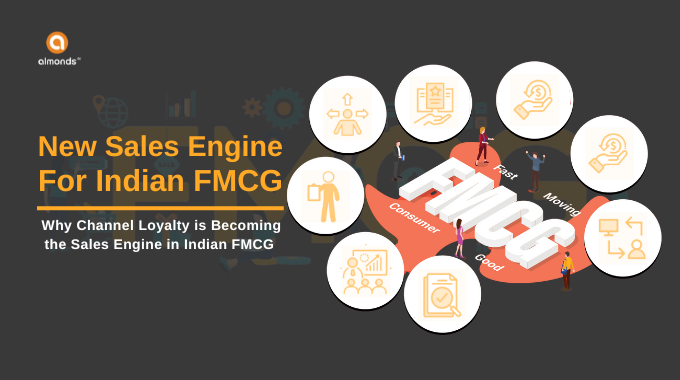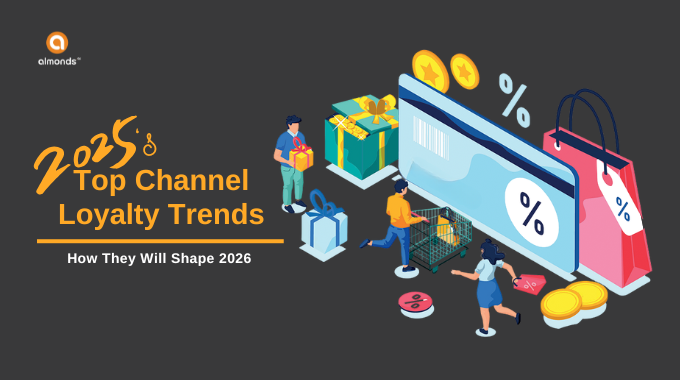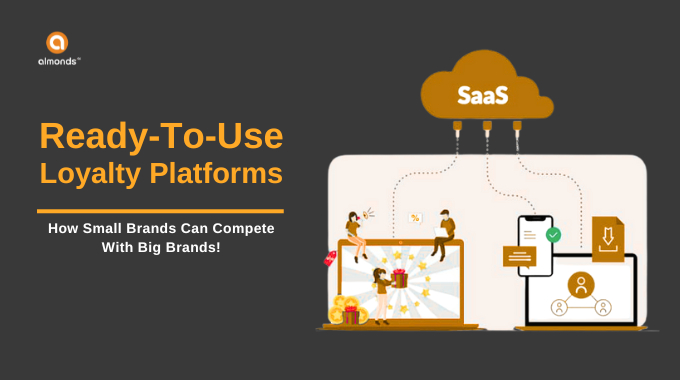Why Healthcare Needs to Think Like Retail—and Retain Like It Too
In a time when patients have endless options—from local clinics to global telehealth platforms—healthcare providers must rethink how they engage, retain, and reward their patients. Enter: Patient Loyalty Programs.
Traditionally used by retail and hospitality, loyalty programs are now making a strong entry into healthcare. And for good reason. Loyalty is no longer just about discounts—it’s about consistent experience, personalized care, digital convenience, and emotional connection.
Whether you’re a diagnostic chain, pharmacy brand, wellness app, or hospital group, a patient loyalty program can drive business growth, reduce churn, and improve care outcomes.
Let’s explore 15 strategic benefits of implementing a patient loyalty program, backed by data, use cases, and global trends.
1. Drives Repeat Visits & Consistent Revenue
According to Harvard Business Review, acquiring a new customer is 5 to 25 times more expensive than retaining one. In healthcare, where trust is everything, repeat visits can significantly improve revenue.
Use Case:
A multi-city diagnostic chain in India introduced a loyalty program rewarding repeat tests and wellness packages. Within six months, over 42% of their customer base returned for a second service, up from 23% pre-program.
2. Enhances Patient Lifetime Value (LTV)
Patients who feel valued are more likely to continue care, refer friends, and spend more over time. Loyalty programs boost LTV by creating continuous touchpoints, not just episodic transactions.
Stat from McKinsey: Patients enrolled in loyalty initiatives are 2.5x more likely to return for follow-ups and elective procedures.
3. Promotes Preventive Healthcare Behavior

Loyalty isn’t just about rewards—it’s also a behavioral nudge. By rewarding preventive actions like health screenings, vaccinations, or fitness goals, you improve both business outcomes and public health.
Example:
A wellness app in Dubai runs a B2B Loyalty Program where corporate employees earn points for completing monthly health goals. The result? A 38% improvement in preventive checkup adherence in under 6 months.
4. Reduces Drop-Off in Chronic Care
Chronic patients often drop off after a few consultations. A loyalty program can build accountability—rewarding medication adherence, therapy sessions, or app logins—ensuring continuity of care.
5. Builds Emotional Loyalty & Trust
Trust in healthcare isn’t just functional; it’s emotional. Recognizing patient milestones—birthdays, surgery recoveries, child vaccinations—builds long-term emotional engagement.
Use Case:
A maternity hospital chain introduced milestone-based loyalty rewards: birth certificate kits, parenting webinars, and baby product coupons. This helped retain new mothers across subsequent pregnancies and referrals.
6. Converts Word-of-Mouth into a Measurable Referral Engine
Referrals are the backbone of most clinics and small practices. By gamifying referrals—offering points for patient, family, or corporate referrals—you convert passive promoters into active brand ambassadors.
HubSpot Report: Referral-based patients have a 37% higher retention rate than cold acquisitions.
7. Lowers Marketing Costs with Organic Growth
Instead of spending endlessly on search ads or aggregator listings, loyalty programs shift focus to retention, referrals, and earned media through patient communities.
Example:
A UAE-based teleconsultation brand reduced their CAC (customer acquisition cost) by 24% by incentivizing loyal users to bring in family members through a simple referral code + reward combo.
8. Enables Cross-Selling & Partner Ecosystem Growth
With a loyalty ecosystem in place, you can cross-sell related services like lab tests, second opinions, home care, or wellness programs. You can even integrate third-party rewards—from pharmacies to fitness gear.
Example:
An Indian hospital network partnered with a wellness brand and gym chain to allow loyalty point redemptions—leading to 11% higher engagement among 25–40 age group patients.
9. Helps You Build & Segment First-Party Data
With data privacy regulations tightening, loyalty programs are one of the few compliant ways to collect first-party data—from appointment frequency to health goals and patient preferences.
Statista (2024): Over 81% of marketers globally now prioritize first-party data in building patient-centric engagement.
10. Personalizes Engagement at Scale
AI-integrated loyalty programs can create hyper-personalized nudges—sending reminders for annual check-ups, offering birthday vouchers, or suggesting location-based rewards—at scale and with precision.
Example:
A clinic in Bangalore used Almonds Ai’s platform to push personalized reminders through WhatsApp, increasing return visits by 31% in just one quarter.
11. Scales Across Channels—Offline, Online, and WhatsApp
Modern loyalty platforms integrate across apps, WhatsApp, SMS, web portals, and call centers. This means patients can check points, redeem rewards, or access health education—without installing an app.
Use Case:
A leading chain of pharmacies in the UAE implemented WhatsApp-based loyalty check-ins, capturing 48% of total redemptions through chat alone.
12. Reinforces Brand Recall in Competitive Markets
In cluttered markets like India and the Middle East, brand loyalty is won through consistency and recall. Loyalty platforms offer micro-engagements—badges, surveys, challenges—that keep your brand top-of-mind.
13. Encourages Feedback, Ratings, and Online Reputation
Many loyalty programs offer incentives for NPS scores, Google Reviews, and app ratings—improving your digital footprint and driving authentic testimonials from real patients.
14. Opens Up Green & Inclusive CSR Channels
Want to be seen as a socially responsible brand? Reward women for wellness visits (Pink Rewards), promote eco-conscious behavior (Green Rewards), or support low-income segments with subsidized health kits through loyalty points.
15. Ready to Plug into B2B, Insurance & Employer Health Plans
Healthcare loyalty isn’t limited to patients—it extends to corporate tie-ups, insurance partners, and B2B models. With tools like B2B Rewards Programs in UAE, you can track redemptions across institutions and unlock ROI across the value chain.
Example:
A diagnostics brand tied up with five corporate HR teams in Dubai. Employees received free tests, the HR earned wellness points for every test, and redemptions included team wellness vouchers—creating a win-win B2B loop.
Wrapping Up: Loyalty Is the Prescription for Sustainable Healthcare Growth
Loyalty programs in healthcare are no longer about coffee mugs or coupon codes. They’re about driving patient behavior, improving business efficiency, and delivering meaningful care journeys.
Whether you’re building B2B Loyalty Programs in Dubai or launching a pharmacy chain rewards program in India, the future belongs to healthcare brands that create engagement beyond the consultation.
💡 Looking to Build a Loyalty Program for Your Healthcare Brand?
Almonds Ai helps businesses design, deploy, and scale patient loyalty programs—powered by AI, WhatsApp, digital rewards, and behavioral nudges.
👉 Let’s talk about how we can help you launch a smarter, scalable, and emotionally resonant loyalty solution.
Frequently Asked Questions
Hospital Loyalty Programs are one of the most preferred ways to enhance profit for businesses
1. What are Healthcare Loyalty Programs?
Answer:
Healthcare Loyalty Programs are reward-based systems designed to engage patients and encourage long-term loyalty to a particular healthcare provider or service. These programs offer rewards such as discounts, free services, or exclusive health-related benefits to patients who consistently visit, follow treatment plans, or engage in health-related activities.
2. How do Healthcare Loyalty Programs benefit patients?
Answer:
Healthcare Loyalty Programs offer numerous benefits to patients, including:
-
Personalized care: Patients feel valued and supported through customized incentives and rewards based on their health needs and preferences.
-
Improved health outcomes: By rewarding patients for maintaining regular visits and following prescribed treatments, these programs encourage better health management.
-
Exclusive rewards: Patients can earn discounts on medical services, free checkups, and other health-related benefits, making healthcare more affordable.
3. How do Healthcare Loyalty Programs benefit healthcare providers?
Answer:
For healthcare providers, these programs help in:
-
Increased patient retention: By offering rewards and incentives, patients are more likely to stick with a provider over the long term.
-
Better patient engagement: Providers can engage patients more effectively, fostering trust and encouraging adherence to health plans.
-
Higher revenue: Retaining loyal patients can boost revenue from repeat visits, procedures, or ongoing treatments.
4. What types of rewards can patients receive through Healthcare Loyalty Programs?
Answer:
Rewards can vary based on the program but commonly include:
-
Discounts on services: Reduced rates for consultations, treatments, or procedures.
-
Free health screenings: Complimentary checkups or diagnostic tests for loyal patients.
-
Exclusive content or services: Access to wellness seminars, health tips, or advanced healthcare technologies.
-
Gift cards or health products: Items like fitness trackers or healthy meal delivery options.
5. How do Healthcare Loyalty Programs improve patient adherence to treatment?
Answer:
By offering incentives for adhering to prescribed treatment regimens, Healthcare Loyalty Programs motivate patients to stay committed to their health plans. The combination of rewards for consistent treatment and ongoing visits encourages healthier habits, ultimately improving patient outcomes.
6. Can Healthcare Loyalty Programs help reduce patient churn?
Answer:
Yes, Healthcare Loyalty Programs significantly reduce patient churn by fostering stronger relationships between patients and healthcare providers. With rewards for loyalty, patients feel more inclined to continue seeking care from the same provider, rather than switching to competitors.
7. Are Healthcare Loyalty Programs customizable?
Answer:
Absolutely! Healthcare Loyalty Programs are highly customizable. Providers can tailor the rewards, engagement strategies, and communication to suit the specific needs of their patient demographic, ensuring maximum relevance and effectiveness in fostering patient loyalty.
8. Are Healthcare Loyalty Programs effective for all types of healthcare providers?
Answer:
Yes, Healthcare Loyalty Programs can be effective for a wide range of healthcare providers, including hospitals, clinics, private practices, pharmacies, and wellness centers. The structure of the program can be adjusted to fit the type of care provided, ensuring that it benefits both the provider and the patients.
9. How can healthcare providers implement a successful Healthcare Loyalty Program?
Answer:
To implement a successful Healthcare Loyalty Program, providers should:
-
Understand patient needs: Tailor rewards and incentives based on what matters most to their patients (e.g., wellness benefits, discounts).
-
Create clear communication: Keep patients informed about how the program works and how they can benefit.
-
Leverage technology: Use patient management systems to track loyalty program participation and ensure seamless reward distribution.
-
Monitor and adapt: Regularly assess the program’s success and adjust it based on patient feedback and engagement metrics.
10. Do patients have to pay to participate in a Healthcare Loyalty Program?
Answer:
Typically, patients do not need to pay to join Healthcare Loyalty Programs. These programs are often offered as a free service by healthcare providers to enhance patient retention and engagement. However, certain premium rewards or exclusive services may require additional payments or a higher level of engagement.







